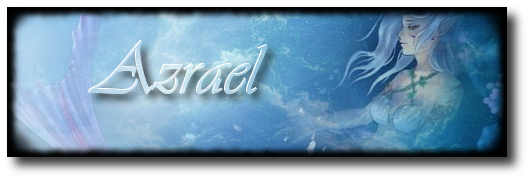Post by Azrael Highborn on Jan 19, 2014 2:08:47 GMT -5

Mythicos
Mythicos is the largest of the four kingdoms and was the first to stand. Its castle was the home of the master of the seas and the ruling family of the worlds ocean for millennia. Its waters contain strong currents, whirl pools, to grottos and lagoons. The waters are mostly tropical however towards the edge the waters can drop down to arctic temperatures. The city is the crown jewel of the kingdom being completely made out of emerald. The homes of the merfolk vary from emerald like the palace to rock like coral.
The people of Mythicos are a lively bunch, loving and promoting the arts. They live highly structured lives and pride themselves in their vast number of pure blood families. There is a strict distinction of class between its citizens. Education is required in this city and starts at a young age. Fashion is another large thing in Mythicos, many of the merfolk her can be seen wearing gems, gold, and fine material. Usually the higher class have the more ornate tails then one of a lower station. Indentured servants are predominate in this society; slavery however is looked down upon but its not so odd for a slave to be sold as an indentured servant.
The Class Distinctions of Mythicos
Royalty
These people are rulers of Mythicos. For the most part, if there is anything they want, they can probably get it. Outsiders may think that they live in extravagance and excess with parties and balls being a common occurrence and a single outfit costing more than a peasant could hope to make in a year. Royalty essentially owns all the land in Mythicos with nobility merely ‘holding’ it for them. Only members of the royal family can grant land to people. All decisions regarding the country as a whole are made by Queen Serenity. All lower tasks are delegated to nobility. Disobeying a member of the royal family is a high crime, and most do well to act subservient in their presence. The royal family lives together in the grand palace of Mythicos. Fashion is similar to Rococo France. Ornate clothing in pastel colors denotes high society. The royal family spends most of their childhood being educated in a wide variety of subjects and a few martial arts.
Nobility
These are people given a province to hold and rule by the royal family. These land privileges are past down the family line. They have a lot of freedom to do as they choose with this land, so long as it doesn’t displease the royal family. They live in a similar manner to the royal family, but much more subdued. They are wealthy, but not as wealthy. Their clothes, their parties, everything are often a cheaper version of whatever is popular among royalty. All noble children are well-educated.
Military
There are two groups of military: those dedicated to a crown and those dedicated to a noble. Those dedicated to the crown are normally held in higher esteem though, and carry more authority. Military typically dress in a uniform that indicates who they serve. They typically only socialize among themselves. However, military rank remains important even in more causal settings.
Vassals
Essentially, these are people charged by nobles to manage peasants for them. They act as supervisors, carrying out a noble’s will. They don’t have the same freedom or wealth as nobility, but tend to be better off than peasants. In addition, they are quite busy as they manage the more day-to-day tasks, and report frequently to their respective noble.
Peasants
These people are allowed to live on a noble’s land in exchange for doing work or providing some service. Nobility ends up taking most of the profits from their work, but peasants are allowed to keep meager portions to themselves. They normally do some kind of labor-intensive job, and dress accordingly. The common sentiment among them is that there work is never done, and work so long as daylight permits.
Indentured Servants
These are normally people who owned some great debt, and are doing their best to work it off. There is typically a time limit to their servitude, but this can be lengthened for a great number of reasons. While they don’t carry the title of slave, they aren’t treated any better than one, being forced to perform grueling labor if their master so wishes. Runaways are also punished severely. However, laws do maintain that they must be given adequate food, water, shelter, and clothing. They tend to wear whatever castoffs their masters give them.

Erythraeus
The Kingdom of Erythraeus was the last to be established; its waters are tropical and abundant with life. The area is heavily reefed and is relatively protected and human free because of it. A large cave system is located under the city, some caves reaching all the way to the kingdom of Haesitatus. The city is made out of rocks piled high to form buildings. Bright cloths line the buildings, creating tents where people sell wares from every kingdom. People come from all over for entertainment, trade, or a place to rest during their travels. The drawback is there is a heavy slave market in this city, slaves are often bought sold...or even captured in these waters.
The people are a diverse bunch; every race is mixed and mingled here. Education isn't very prominent, however due to the heavy trade most people tend to know how to read and do mathematics. That and probably can talk you into selling your soul to them. In short if you run into a person with a crooked personality chances are they hail from Erythraeus.
Erythraeus Guild Levels
Apprentice
These are the initial years just spent learning one’s respective craft. This can vary widely between the guilds, but most will have this be the first 20 years upon entering a guild. An apprentice job is often time repetitive work, learning to do something exactly right. An apprentice will normally be under the careful guidance of one master, but may have a small group of masters overseeing their progress. Masters are normally required to provide food and lodging for their apprentices for however long they work under them, so they try to make sure the apprentice is worth the commitment in some way. At the end of this apprenticeship, a master will evaluate their apprentice and recommend them to become a journeyman.
Journeyman
After gaining competency in one’s craft, one spends possibly the next 50-100 years as a journeyman. At this point, they travel around the seas, spending time with many different masters. However, they now get paid for their work as opposed to simply being given food and lodging. They also have some respect and freedom in their craft, no longer simply taking orders from their masters, but playing a part in the creative process.
Master
At some point, a journeyman must produce a true masterpiece as judged by the grandmasters of the guild. Some go their whole lives without producing a single masterpiece, while others do it quickly in their careers. Once deemed as a master, one can open a business and start taking on apprentices.
Grandmaster
It’s hard to say when one becomes a grandmaster, and most never do. This requires a few things typically. First, one must produce several masterpieces, showing one has an intuitive understanding of the craft. Second, one must have the respect and admiration of the majority of masters of the guild. Third, one must be nominated by a current grandmaster for the title. This nomination will then be under review for as long as 50 years. Often times, a grandmasters will continually visit a prospective grandmaster’s workshop during this time. Sometimes people get declared grandmasters after their death due to the lengthy process.

Haesitatus
Haesitatus unlike Mythicos has not changed much in millennia; the ways of old are strong here. People are mostly found in small tribes living off the land. The tribes are unified and diplomatic with one another. This first tribe being the one with the most say. The first tribe resides in an underwater cave kept at warm temperatures by the vents around it. Vents are found throughout Haesitatus, mostly in underwater caves. However there is a large trail of vents that form a path through the otherwise arctic waters. The waters are freezing, large chunks of ice are like upside down mountains. Beautiful but deadly if you stray away from the vents for too long.
As stated before the people maintain a nomadic feel to them, living off the land. They are ritualistic, and are very in tune with the balance of the ocean around them. They value families, and morals above all else. They are a kind folk often opening their homes for traveling strangers, eager to hear stories from other kingdoms. Currently there are three tribes along with the sea witch.
The Tribes
Ettinegla
The Ettinegla is focused mostly around moving their herds of fur-bearing trout around to fresh aquatic pastures. Normally, these hairy fish are kept far from human eyes, but rare sightings of them have led to the myths about them on land. However, they come in more colors than just white, such as blues and greens. The fur is stronger and warmer than wool, making it far more useful and valuable. In addition, fur-bearing trout lay eggs regularly, which can be harvested for food. Much of these fish are used to being around merfolk and adaros, so they will often come right up to them. Much of their system of governance is based around clan. Clans are defined by one chieftain, who holds a loose dominion of the area and has a multitude of people swearing oaths of fealty under him. This chieftain will be the representative of their people in any disputes outside the clan. However, things can become complicated when someone swears an oath to a different chieftain in the same area. This is typically resolved by whoever has the most supporters winning the region, and rarely results in bloodshed. Once every so often, gatherings are called to settle internal disputes inside of clan with the chieftain being the final judge. Clans vary in size, but larger clans are the best off. Becoming a chieftain means you typically have performed some great heroic task that has earned you a lot of respect. This tribe is equal parts Merfolk and Adaros.
The Odolza
As a hunter-gatherer tribe, the Odolza people follow the migratory movement of large arctic fish, such as halibut or salmon. They live off large schools of these fish, but take pains as to not overfish, allowing them to follow the same school for multiple generations. Whales used to be part of the diet, but with declining populations, this practice is no longer done. This tribe is one of the most at risk in Haesitatus area because of dwindling food sources. Most people will know them as the tribe with Beluga whales. It is a misconception that each member of the tribe owns as the whales are very slow breeding animals. While the whales are used for most hunting expeditions, ownership of the animal is normally a major privilege with calves being given to those who have done something great to help the tribe as a whole. Many young people go off to do something for the tribe that will earn them this privilege. This is one of the few tribes who know the most about entering the Freeze. Wearing thick seal hides, they know how to traverse the frigid environment. The tribe is led by council. Council members will typically serve until death, but there have been instances where those have been disgraced from the council. New council members are determined by the remaining members. This tribe is mostly made up of Adaros.
The Adanne
Another hunter-gatherer society, but the Adanne are focused around the brine pools. Harvesting mollusks is the main way they get sustenance, only taking ones that are of a certain size. However, crustaceans, including multiple types of shrimp and crab, and tubeworms are also staples of the diet. Most other societies find the tubeworm dishes incredibly unappetizing though, and many claim it to be an “acquired taste”. All though they are all considered to be the part of the same tribe, members are clustered together into large family units, where grandparents, parents, aunts, uncles, cousins, and grandchildren all live together. Marriages tend to have men joining their wives’ families. It’s common courtesy for the groom to present a gift to all his new relatives upon joining the family with the most extravagant gift going to the family matriarch. Family matriarchs, normally the oldest woman in the family, pretty much control what the family unit does and where they will go. This tribe is mostly made up of Merfolk.

Cotovatre
Cotovatre is a rocky land, its waters cold but habitable, it is the second largest kingdom and full of revolutionary ideas. The waters are darker; with less visibility; and known for its thick kelp forests and deep ravines. Inland has some more unpleasant areas, but it is still home for the creatures of Cotovatre. The people here tend to be made of tougher hide then most, Adaro's thrive in this harsh environment. The Adaro's are a proud self sufficient race; they rely on a heavily military based life style. They specialize in metal work and weaponry.
The people of Cotovatre are ruled by the King Nefar, he promotes equality in his subjects and has created a system where one of a lower rank can rise to the top. He doesn't believe in pure bloodlines, and family stature. If you work for it you can obtain it; and its with this philosophy that the Adaros are a hopeful and hard working people.
The Life of a Cotovatre
Military service is mandatory for all individuals over the age of 50 and under the age of 200 years. Many choose to stay in the military past this time however. As a result, much of their society is based off military rank. Even after you leave, you will be still seen as the rank in which you left your service.
Laws apply equal to all classes, and the upper class cannot pass on undeniable orders to the lower class. Education is provided free to all children. Early on in life, children are separated into one of two educational tracks: higher learning and vocational. While it is typical that the children of wealthy families will be placed into higher learning tracks and lower class families will have children in vocational tracks due to disparity of resources, it is possible for children of lower class families to have a more promising future by being placed in a higher learning track.
Upper Class
This can be separated into essentially new blood and old blood. Old blood refers to families that earned their wealth prior King Nefar’s rise to power. These tend to be the wealthiest and most influential groups to this day, but because of King Nefar’s new laws, their influence is steadily waning. New blood refers to families that earned their wealth after King Nefar’s rise to power and somewhat because of the new laws that he has laid in place. They tend to be incredibly of devoted to the crown, and many of them are high ranking military officials. Rising through the military ranks is seen as one way of gaining wealth, but this requires serving far past the mandatory 150 years of service.
Middle Class
This is an increasing segment of population. Previously, there was nothing resembling a middle class in the country. Some of these are made of middle rank military officials. Metal workers are also often middle class as well as people in some type of managerial or supervisor position. Oddly enough, people in the agrarian sector also tend to be in this group. They don’t have as much disposable income as upper classes, but they live in relative comfort.
Lower Class
Most people who work labor-intensive jobs sit in this group. They don’t have too many luxuries. However, current laws make it so many of their basic needs are met. It is a firm belief in the nation that no one should go without food or a home, so there are a number of accommodations for those who can’t afford basic necessities.

 ❧
❧ 



